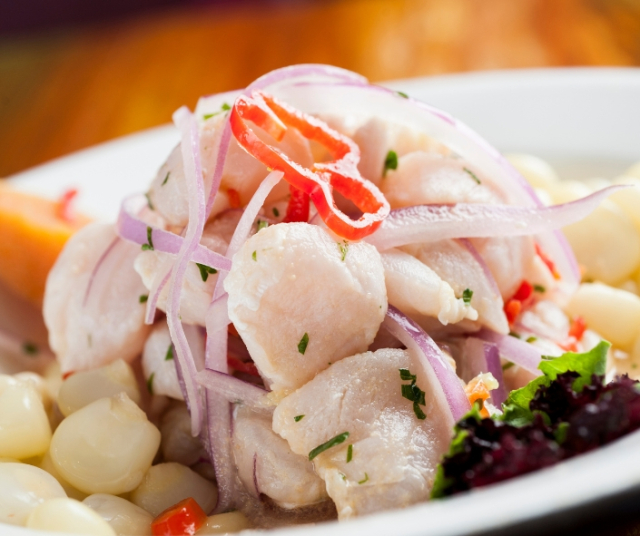Peruvian ceviche is a culinary treasure that has captivated the palates of people around the world. Originally from Peru , this dish is an explosion of fresh and vibrant flavors that celebrates the treasures of the sea. Get ready to immerse yourself in the feast of flavors that Peruvian ceviche offers.
Origins of Peruvian Ceviche
Ceviche has deep roots in ancient Peruvian culture and has been an integral part of its culinary history for centuries. It is believed that the preparation of ceviche dates back to pre-Inca times, where fishermen used citrus fruit juice to marinate fish and thus preserve it for longer.
With the arrival of the Spanish in the 16th century, ceviche underwent an evolution, since lemons and chili peppers were incorporated into the recipe. Over time, the dish was enriched with influences from various cultures, including Chinese and Japanese, due to immigration in the 19th century.
Ceviche Essential Ingredients
Peruvian ceviche is a harmonious combination of fresh and simple ingredients, but carefully selected. The main components of ceviche are:
Fresh Fish or Seafood: Fresh fish is the star of Peruvian ceviche. Varieties such as sea bass, sole, grouper, snapper or any fish with white and firm meat are used. It is also common to prepare ceviche with shrimp, squid, and octopus.
Lemon: Lemon juice is the key ingredient that "cooks" the fish in ceviche. The acidity of the lemon denatures the proteins in the fish, giving it its soft, cooked texture.
Ají Amarillo: Ají amarillo is a type of Peruvian chili that provides a spicy touch and a characteristic flavor to ceviche. Its presence is essential to achieve the perfect balance of flavors.
Red Onion : Red onion is thinly sliced and mixed with the fish to add a touch of freshness and crunch.
Coriander: This aromatic herb is an essential addition to ceviche, providing its characteristic aroma and flavor.
Salt and Pepper: To enhance the flavors of the ingredients, salt and pepper are used to taste.
The Art of Preparing Ceviche
The preparation of Peruvian ceviche is an art that requires precision and skill. Fish must be fresh and of high quality to ensure food safety and the best taste. Once the fish is selected, it is cut into cubes or strips and placed in a container.
The next crucial step is to add the lemon juice and yellow pepper to the fish, making sure that all the pieces are completely covered. The acidity of the lemon will "cook" the fish in a matter of minutes, transforming it into a soft and tender texture.
Red onion is added to bring freshness and crunch to the ceviche, while cilantro adds a unique flavor and aroma. Finally, it is seasoned with salt and pepper to taste to enhance all the flavors.
Regional Variants of Peruvian Ceviche
Peruvian ceviche has a variety of preparations and regional variants that reflect the culinary diversity of the country. Some of the most popular variants are:
- Classic Ceviche: The most traditional version of Peruvian ceviche, prepared with fresh white fish, lemon, yellow pepper, red onion and cilantro.
- Mixed Ceviche: This variant incorporates a mix of seafood such as shrimp, squid, and octopus, along with fish.
- Ceviche Nikkei: A fusion of Japanese and Peruvian flavors, ceviche nikkei is made with fresh fish and mixed with soy sauce, sesame oil, and ginger.
- Ceviche de Conchas Negras: A coastal delicacy prepared with black shells, considered a delicacy in the northern region of Peru.
- Mango Ceviche: A refreshing variation that combines fish with pieces of ripe mango for a sweet touch.
Ceviche and its Cultural Importance
Peruvian ceviche is more than a delicious dish; It is a symbol of identity and pride for Peruvians. It has been declared Cultural Patrimony of the Nation and is cause for celebration in festivals and gastronomic events throughout the country.
In addition to its cultural relevance, ceviche is a valuable contribution to world cuisine and has gained international recognition as one of the best seafood dishes in the world. Peruvian restaurants and cevicherías abroad have helped spread and popularize this exquisite dish in different corners of the planet.
